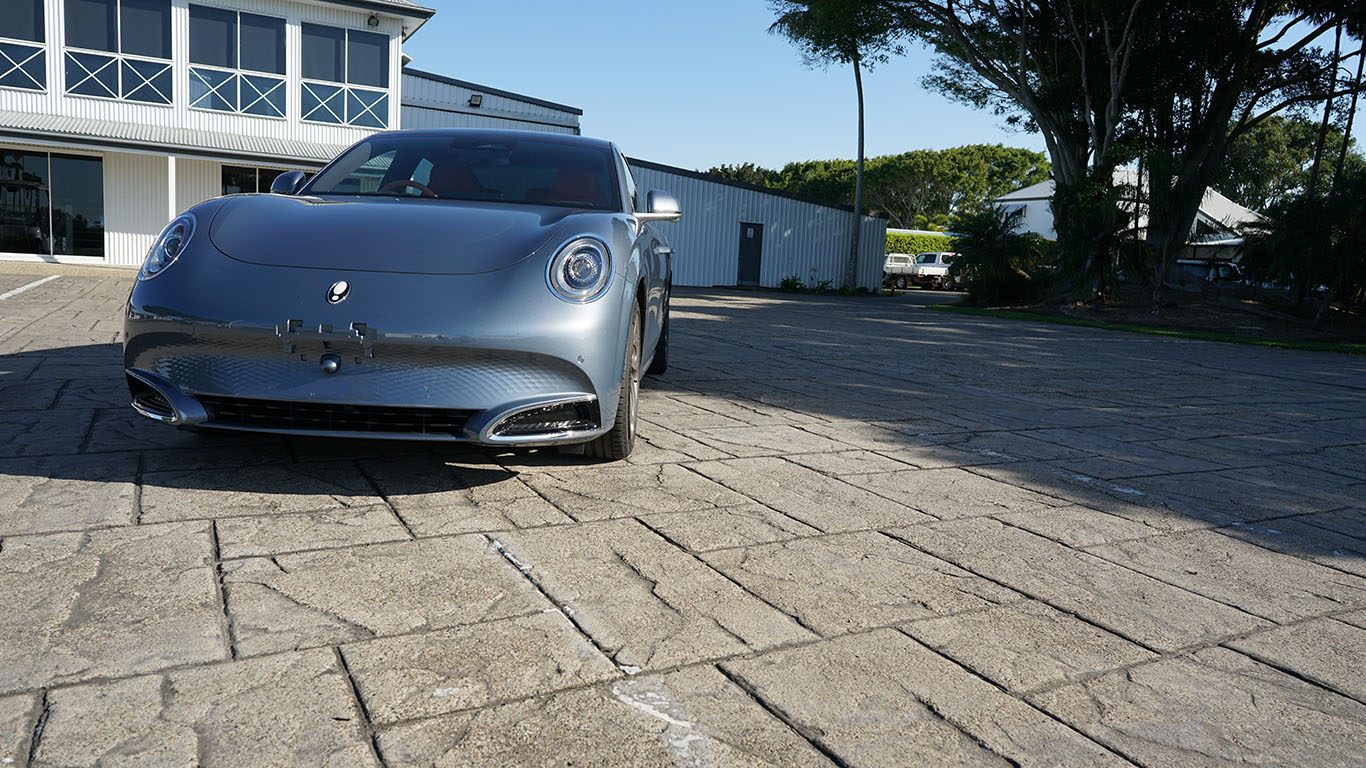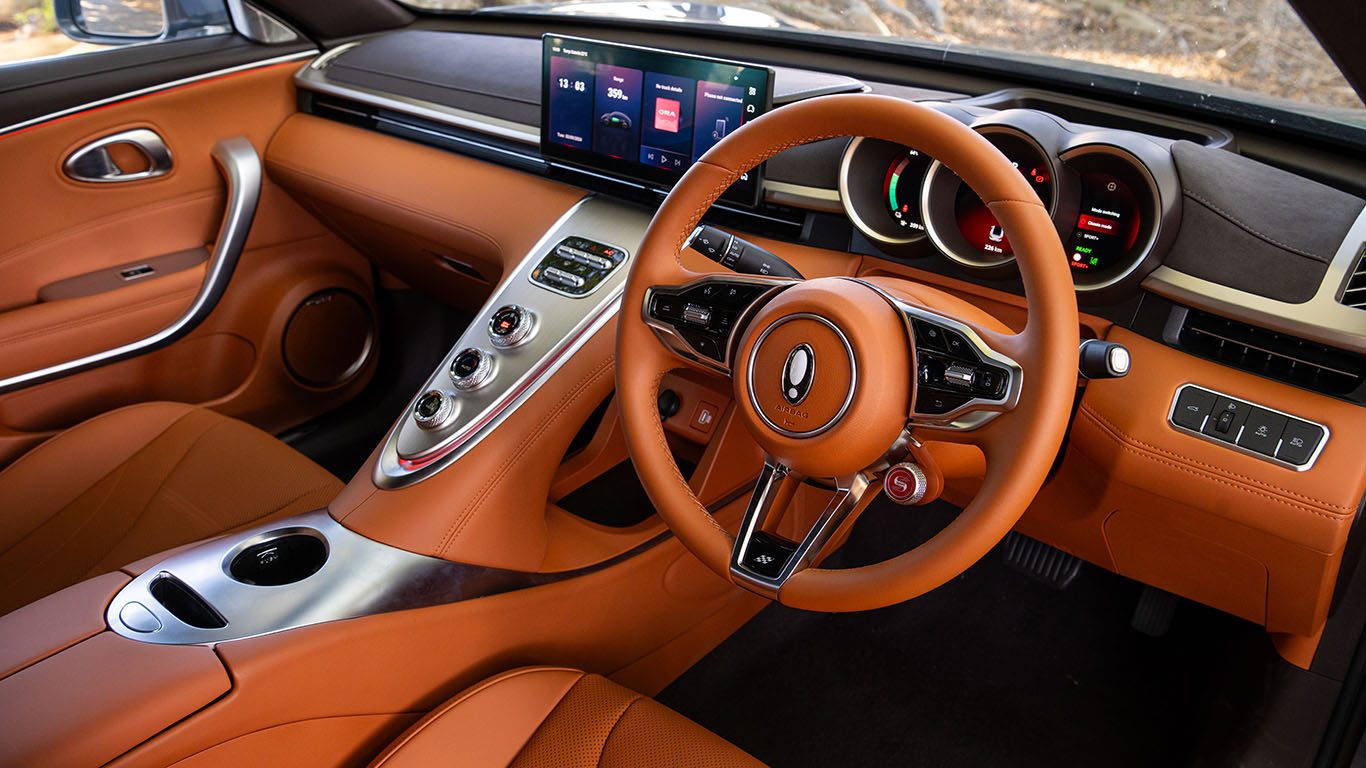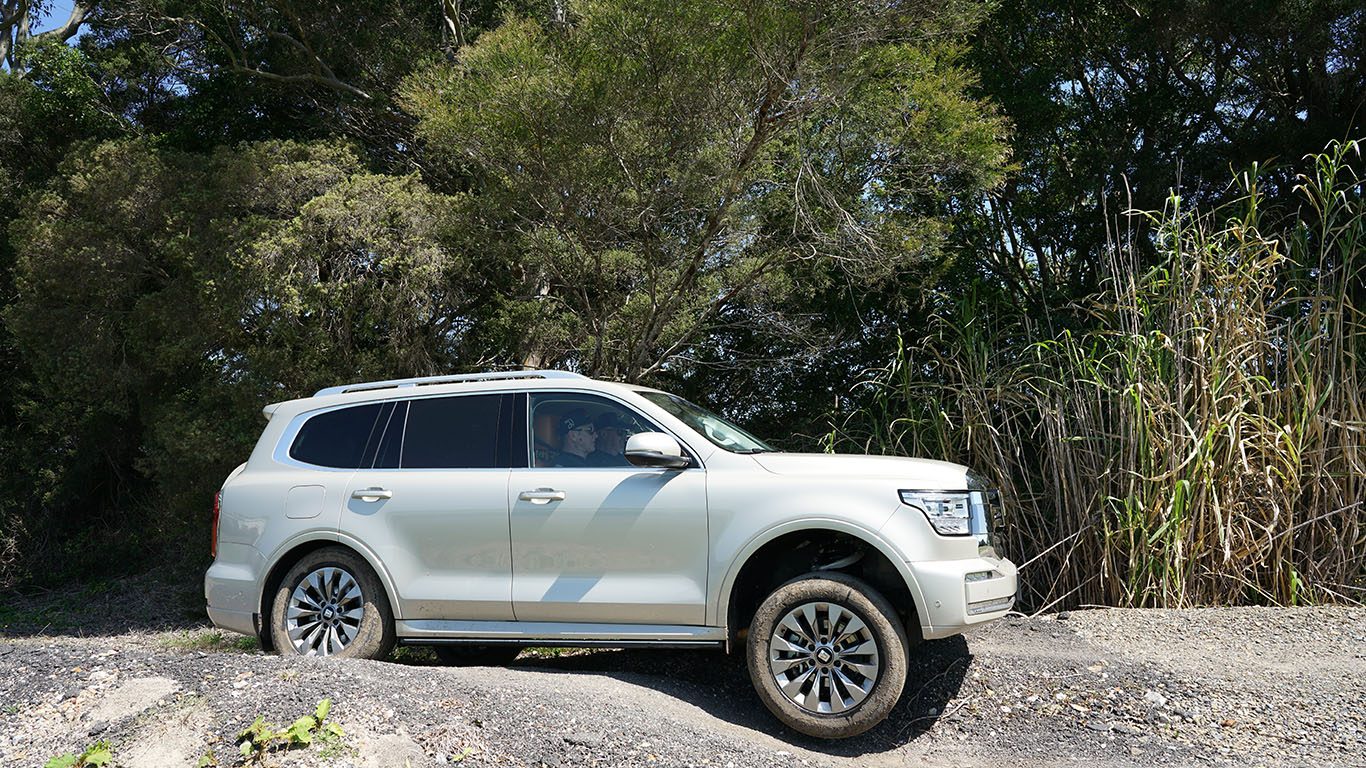Three GWM Evaluation Vehicles – First Drives
Words Peter Louisson | Images GWM
Less than six months ago we flew to Melbourne to check out GWM’s new Tank 500 Hybrid HEV SUV and the Cannon Alpha ute based on the same hybrid mechanicals. These proved almost unstoppable off-road. Now GWM is looking to introduce a PHEV variant of both of these models.

It is also evaluating a dual-motor Ora Sport fastback which is like the Ora we already have, only on steroids. It’s similar to behold up front (911-esque peepers) while at the back reminds of a Panamera with Bentley taillights. The midsection is Ioniq 6-like. Think four-door coupe then.
Some PHEV background
GWM is expanding, especially on the hybrid front (who isn’t?) bringing more in 2025 to meet Australia’s New Vehicle Efficiency Standard due midyear.
Since the Tank 500 dotted down, the company has sold over 1000 units in Australia and believes there is more sales potential yet with the PHEV variant.

Known as the Hi4T, the Tank 500 Ultra PHEV features a bigger battery and a 120kW/400Nm motor joining forces with a 180kW/380Nm petrol engine. The resulting system output is 300kW/750Nm, up by 45kW/103Nm and enough for a zero to 100 time of 6.9sec. That compares with 8.3sec for the HEV hybrid version. The Cannon Alpha Ultra PHEV gets the same powertrain.

Both run on 91ULP and have a claimed combined fuel use figure of circa 2.0L/100km. That compares with 8.5 and 9.8, respectively, for the two hybrids. However, at a low state of battery charge, fuel use figures are similar to those of the regular hybrids.
Fully charged, expect a zero-emissions range of around 110km. That’s thanks to a 37.1kWh NMC battery pack sited over the rear axle.

With a CCS 2 plug they can hook up to 50kW chargers. A 30-80 per cent rezip takes 24min, while a home unit manages a full recharge in 6.5 hours. Compared with the HEV Hybrid, the fuel tank is smaller because of the battery pack but is still 70L. Towing ability is similar to that of the Tank 500 HEV, down slightly to three tonnes while the Cannon Alpha PHEV can tow 3.5 tonne braked loads.
In terms of off-road numbers, all the relevant figures are the same as those of the HEV Hybrids. As before, there are three locking diffs for handling the rough stuff.

A major difference between the Tank 500 HEV and the Ultra PHEV is that the latter has no third-row seating because of the battery pack. However, those in the back have an enormous amount of lounging space. There’s also sufficient room for three adults across the back.
On the day, we drove an up-spec XSR variant of the Cannon Alpha PHEV, featuring a two-tone paint job, and uprated suspension and brakes. All vehicles are preproduction so if they make their way down under may end up being slightly different.
GWM Ora Sport Dual Motor
The Norwell driver training complex 30 minutes from Surfers has both off- and on-road facilities. On track we got to sample the Ora Sport Dual Motor that resembles the current Ora in name only. At 4871mm in length and weighing a stated 2115kg, it’s way bigger. With flush-mount door handles, the slippery shape aids range; GWM claims a drag coefficient of 0.22.

Under the swoopy skin is a body that features 77.6 per cent high-strength steels for added safety. Integrated into the chassis is an 83.4kWh NMC battery pack giving a claimed range of 550km NEDC, roughly 450km of WLTP running. With a motor for each axle, system power is 300kW/680Nm, mean energy use is 15.5kWh/100km and a claimed 0-100 time takes 4.3sec.

Plenty of Performance
We had our timing gear with us, and clocked 4.6sec two-up so 4.3sec with just the driver seems accurate. Out of the blocks, there’s almost zero slip from any corner. The Ora Sport Dual Motor also managed an 80-120km/h overtake in 3.0sec so is quick.
GWM says the battery pack can be recharged from 30 to 80 per cent in 32min using a 50kW unit. Evidently it takes 15 hours for a full recharge using a wallbox.

The standard specification for the Ora Sport Dual Motor includes a panoramic glass roof, leather-like interior, Infinity sound system, and 19-inch alloys encased in 235/45R19 Michelin Pilot Sport EV rubber. It has a range of drive modes, Sport+ activated by pushing a red button on the wheel. Along with extra punch you get an ICE soundtrack and mock shifts.
Suspension is fixed. The accommodating ride makes this feel more GT than Sport, despite the name. It has the usual regen modes plus a one-pedal setting. On high, there’s generally enough retardation to set corner entry speed.

On the tighter turns of the Norwell circuit you can sense this is over two tonnes and you need to set corner entry speed just right or it will push into gentle understeer but with AWD it’s fast out of the bends and can carry plenty of speed on the more open turns. With its comfort-oriented suspension there’s some body lean but we suspect on road this would make for a sumptuous distance driver, quiet, resilient, and effortless. Brakes feel strong too, for when regen isn’t quite sufficient.

Too Easy For The PHEVs
The experience on the other side of the Norwell Motorplex reminded of our earlier hybrid drive. This course was man-made but sharp pinches and ridges set up to demonstrate articulation were handled just as convincingly by the evaluation PHEVs.

There was no need to engage 4L or diff locks; both simply romped over everything. And at times they did so in electric mode only, the motor firing for steeper or difficult pinches, like in the rock crawl area.

Again, the Cannon Alpha had a slight advantage in ground clearance and grip with its off-road oriented rubber. Conversely, the Tank 500 Ultra PHEV proved slightly calmer over the rougher stuff.

So, in essence, these are similar to the hybrid machines, only with the PHEV powertrains are stronger with the potential for using much less fuel. We’d imagine about half as much for the average owner in mixed use.
And the GWM Ora Sport Dual Motor has the wherewithal to foot it with the similarly sized BYD Seal.





